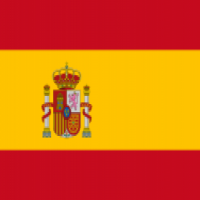Summary:
A Spanish university has developed a procedure for the decontamination of recycled plastic materials, improving their quality to be used in high added value applications. The most innovative aspect of the technology is the fact that the decontamination stage is carried out by extraction, using a water-soluble extracting agent, and rinsing. Companies interested in the commercial exploitation of this technology through license agreements and/or technical cooperation are sought.
Description:
It is well known that plastic waste has become a global problem in today's society, so its recycling and subsequent use as a raw material are needed.
While plastic waste from industries can be treated by mechanical recycling to obtain high-quality material, domestic plastic waste has a high content of food scraps and cleaning products absorbed into the polymeric matrix, becoming contaminants. Besides, waste sorting technologies are not fully developed.
The contaminants that can be removed by the conventional mechanical method are mostly physical impurities such as soil, dust, surface organic residues, etc. However, the technology is not sufficiently developed in the case of chemical pollutants within the plastic matrix and contaminants adhered to the plastic's surface by the use of adhesives (for example, paper labels).
In addition, existing technologies only remove volatile organic compounds (VOCs), oxidizable compounds, and water-soluble contaminants, but they have some limitation when removing organic contaminants such as non-intentionally added substances (NIAS) including both volatile and heavy components.
To improve the quality of recycled plastics, a Spanish research group has developed a procedure for removing organic contaminants in recycled plastic materials that work at atmospheric pressure using a non-volatile and water-soluble extracting agent. These contaminants are found both inside the polymer matrix and on the surface of the plastic. Organic compounds have been shown to migrate from the plastic matrix into the solvent, thus reducing their concentration in the plastic.
This new procedure for the decontamination of recycled plastic consists of the following stages (Figure 1):
1. Separation and shredding of the plastic: separation can be carried out using identification techniques such as NIR (near-infrared spectroscopy), MIR (middle-infrared spectroscopy), infrared thermography, LIBS (Laser-induced breakdown spectroscopy), or X-ray fluorescence. While shredding is carried out by a blade crusher, a mill, or cryogenic shredder, to reduce the size of the material to flake or dust.
2. Washing (with or without surfactant, oxidizing agents can also be used to remove surface impurities), rinsing, and drying (mechanically).
3. Decontamination carried out in the decontamination module, where the contaminants and additives present in the recycled plastic are removed.
4. Water recovery and extracting agent recovery systems to be recirculated and reused, making the process sustainable.
Water recovery can be carried out by ultrafiltration and flocculation-decantation, or by crystallization and flocculation-decantation. Meanwhile, solvent recovery is carried out employing ultrafiltration membranes and subsequent filtering.
Companies involved in the processing of plastics of varied nature coming from the plastic waste, either of industrial or domestic origin, are sought.
The research group is mainly looking for companies interested in acquiring this technology for its commercial exploitation through license agreement. The company should be responsible for the development of the industrial prototype, the validation of the technology, its installation and its introduction into the market. The university will be ready to provide technical assistance in each step, if required.
However, the research group would be also interested in establishing technical cooperation agreements to further develop the laboratory-scale prototype, to find new applications or to adapt it to the company’s needs. The goal of this type of collaboration would be increasing the technology readiness level for a future commercial exploitation of the patent. The university would offer its support based on their know-how; while, the partner sought would provide its expertise to help improve this invention. The university would offer this partner a preferential option to acquire this technology in exclusivity.
Type (e.g. company, R&D institution…), field of industry and Role of Partner Sought:
- Type of partner sought: Industry.
- Specific area of activity of the partner: Recycling of plastic waste; Manufacturers of plastic containers; Producers of virgin raw material.
- Task to be performed:
* In the license agreement: to buy a license for the technology, to further develop it to the industrial scale and to introduce it into the market.
* In the technical cooperation agreement: to provide their expertise in order to collaborate with the scientists on further development and improvements of the technology. The company should identify technical requirements and/or market and client’s needs in order to carry out further technical development so that the market readiness will be increased and the technology could be commercially exploited.
Stage of Development:
Under development/lab tested
Comments Regarding Stage of Development:
The system has been developed on a laboratory scale, treating approximately 0,1 kg/h of plastic, depending on its origin.
It has been tested with plastics of different natures: PE (polyethylene), PP (polypropylene), and PET (polyethylene terephthalate).
It would be necessary for its commercialization to build a demonstration plant that processes 500 kg/h to validate the technology and the products obtained.
IPR Status:
Patent(s) applied for but not yet granted
Comments Regarding IPR Status:
Spanish patent application.
External code:
TOES20200928001








